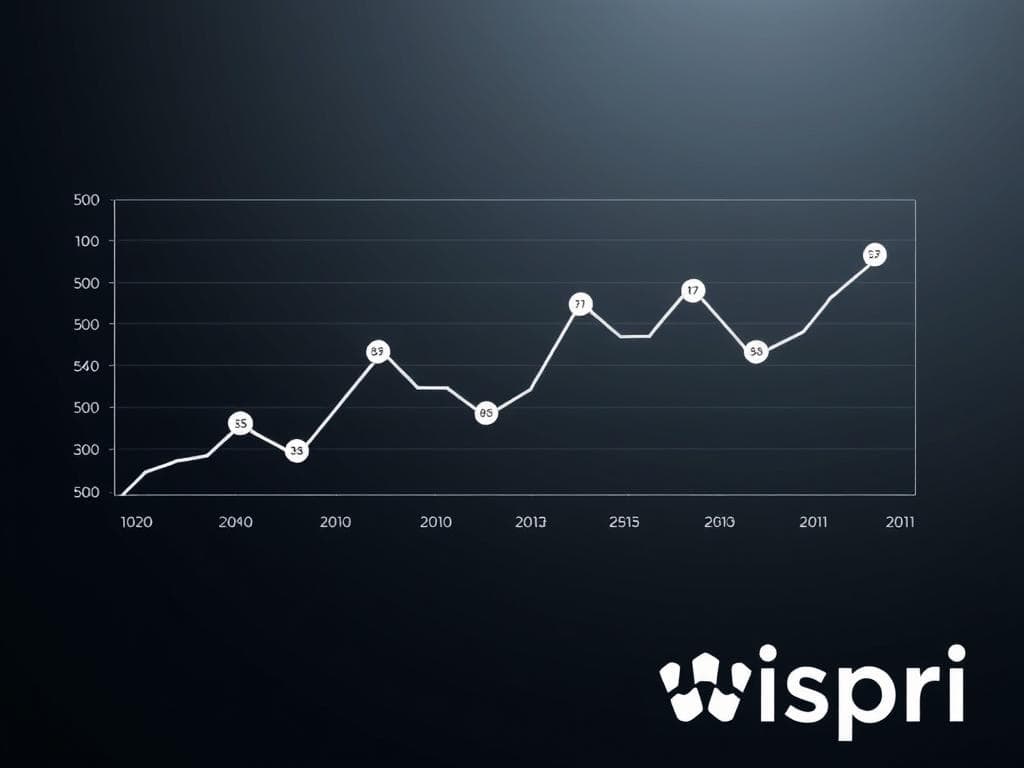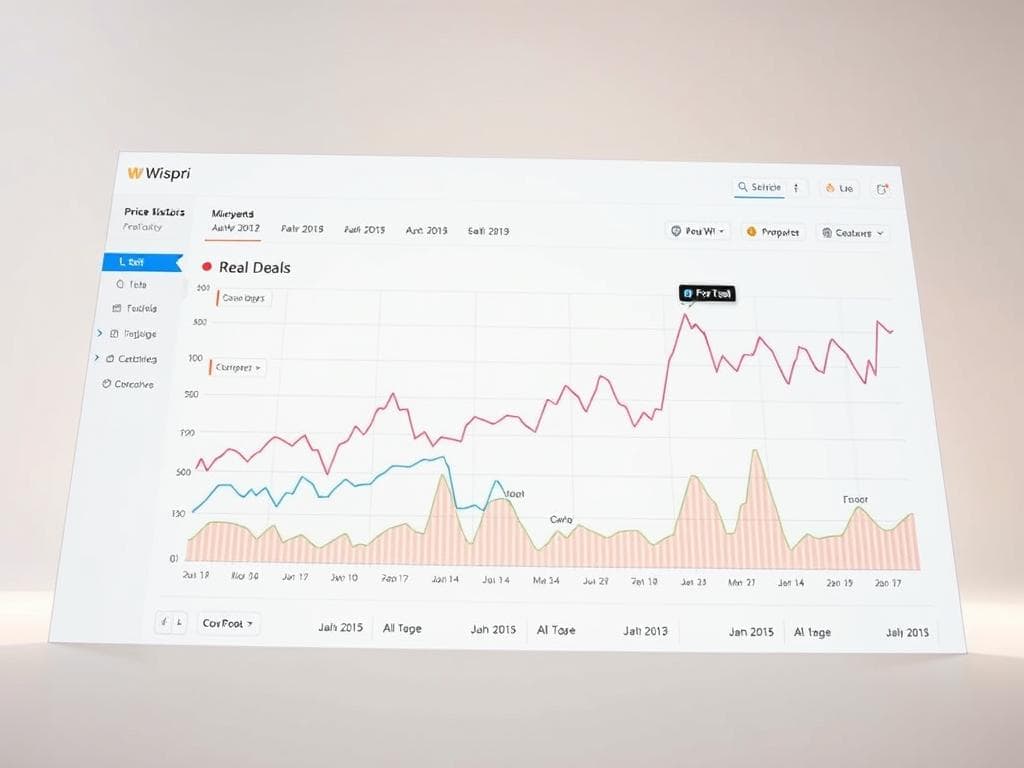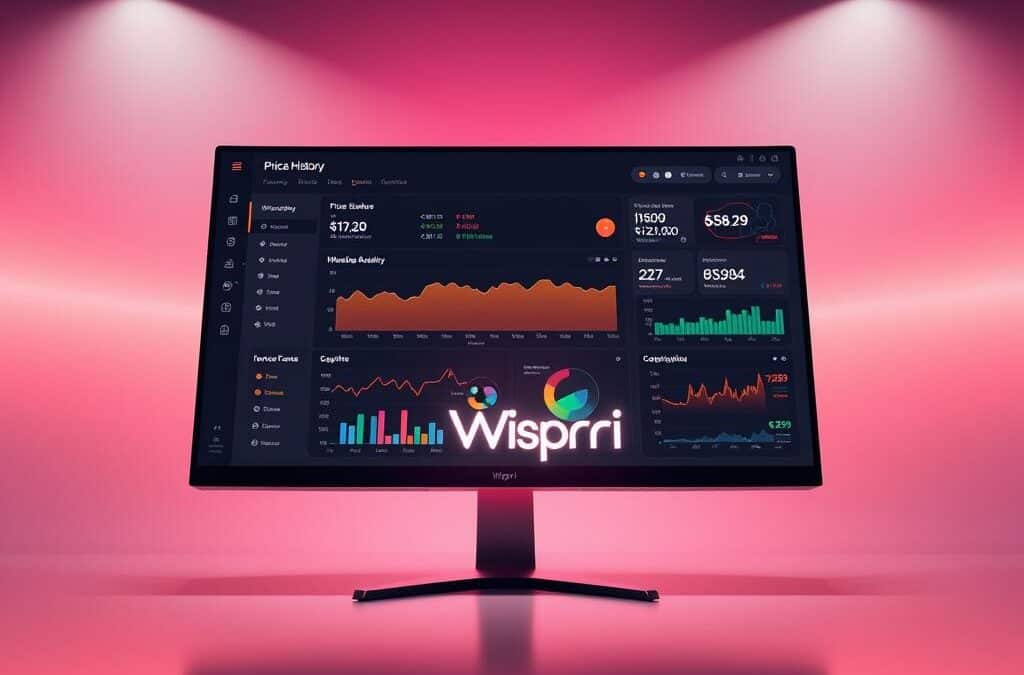Australian shoppers are increasingly savvy, but with constant sales and discounts flooding the market, it’s challenging to distinguish between genuine deals and clever marketing tactics.
In today’s retail landscape, understanding price trends is crucial. By analyzing the price history of products, consumers can make informed purchasing decisions, potentially saving hundreds or even thousands of dollars annually.
Wispri, Australia’s leading price tracking platform, helps smart shoppers save money by monitoring product prices across multiple retailers and sending instant alerts when prices drop to desired levels.
Key Takeaways
- Understand how to use price history data to identify fake sales and genuine deals.
- Learn how retailers manipulate pricing strategies to create the illusion of savings.
- Discover how to use price tracking tools for informed purchasing decisions.
- Time your purchases effectively to save on electronics and household essentials.
- Explore Wispri’s real-time price monitoring and alerts for a smarter shopping experience.
Understanding Price History and Why It Matters
Knowing the price history of a product can save consumers money and help them avoid being misled by false discounts. Price history analysis is a powerful tool that provides insights into the pricing trends of products over time.

What Is Price History and How Is It Tracked?
Price history refers to the record of past prices for a particular product or service. It is tracked using sophisticated algorithms that monitor and record price changes across various retailers. This data is then analyzed to identify patterns and trends in pricing.
Wispri eliminates the need for manual price checking by providing historical price data, helping users avoid fake sales and find the best deals on products.
The Psychology Behind Sales and Pricing Strategies
Retailers employ various psychological tactics to create a sense of urgency and perceived value through their pricing strategies. The “anchoring effect” is commonly used, where a high “regular” price is set to make the sale price seem more attractive.
- Retailers use limited-time offers to create a fear of missing out (FOMO), pushing consumers to make impulsive purchases.
- Australian retailers often target specific demographics, such as men and women, with tailored pricing strategies.
- Comparative pricing creates an illusion of savings by placing products next to higher-priced alternatives.
Understanding these psychological triggers helps consumers make more rational decisions based on actual value rather than emotional responses to marketing tactics. By being aware of these strategies, consumers can better navigate the retail landscape and make informed purchasing decisions.
How to Spot Fake Sales Using Price History

Spotting fake sales requires a keen eye on price history and an understanding of retailer pricing strategies. By analyzing price drops and offers, you can identify genuine deals and avoid misleading discounts.
Common Pricing Tactics Retailers Use
Retailers often employ various pricing tactics to make their offers appear more attractive. For instance, stores like Target and home goods retailers frequently use comparison pricing with “similar” products that have different specifications to create the illusion of savings.
Another tactic is to inflate prices before major shopping events, only to offer “massive discounts” that bring prices back to normal levels. Understanding these tactics can help you navigate price comparisons effectively.
Red Flags That Signal a “Fake” Discount
Several red flags can indicate a “fake” discount. These include vague “was/now” pricing without specific dates, suspiciously short-lived “regular” prices, and multiple price drops in quick succession.
Other warning signs include regular dips to the same “sale” price every few weeks, repeatedly extended “limited time” offers, and significant price increases before major shopping events like Boxing Day or Click Frenzy.
By being aware of these tactics and red flags, you can make more informed purchasing decisions when shopping online or in-store, especially when browsing home goods or other product categories.
Identifying Genuine Deals Through Price History Analysis

Price history analysis is a powerful tool for identifying authentic discounts in the Australian retail market. By understanding how prices fluctuate over time, shoppers can make informed decisions about their purchases.
Characteristics of a True Discount
A true discount is characterized by a significant reduction in price compared to the product’s historical pricing data. For instance, if a product has been priced at $100 for several months but suddenly drops to $80, it could be a genuine deal, especially if this price drop aligns with seasonal sales patterns or new product launches.
To verify the authenticity of a discount, consumers can look for price drop alerts on retail websites. These alerts notify shoppers when a product’s price falls below a target price they have set, ensuring they never miss a good deal.
Seasonal Pricing Patterns in Australian Retail
Australian retail follows distinct seasonal pricing patterns, with major sales events clustered around specific times of the year. For example:
- Electronics see their best genuine discounts when new models are announced, particularly after Apple’s September launch events.
- Sporting goods, including running equipment, are discounted seasonally, with winter gear going on sale in spring and summer equipment offers appearing in autumn.
- Furniture and home goods retailers offer genuine discounts during February and August clearance periods to make room for new season stock.
Understanding these patterns allows savvy shoppers to anticipate genuine deals and avoid purchasing during artificially inflated price periods that often precede major sales events.
Wispri: Australia’s Leading Price History Tracker

For savvy shoppers in Australia, Wispri is the go-to platform for price history analysis. With its comprehensive coverage of the Australian retail landscape, Wispri tracks prices across major platforms including Amazon Australia, eBay, JB Hi-Fi, Harvey Norman, Officeworks, and Bunnings.
Key Features and Benefits
Wispri offers a range of features that make it an indispensable tool for price-conscious shoppers. Its comprehensive retailer coverage extends to specialized stores in categories like electronics, gaming, home goods, fashion, and groceries. This ensures that no matter what you’re shopping for, you can track prices effectively.
The platform’s integration with major department stores like Target, Myer, and David Jones allows users to monitor big-ticket items and seasonal offers across Australia’s most popular shopping destinations.
Retailers Covered and Integration Options
Wispri’s coverage includes both online and brick-and-mortar retailers, providing a complete view of the Australian retail landscape. The platform’s Chrome extension seamlessly integrates with retailer pages, offering instant price history data while browsing. For mobile shoppers, Wispri offers integration options that work across devices, ensuring consistent price tracking whether shopping from home or on the go.
Additionally, Wispri’s API allows for integration with other shopping tools and services, creating a comprehensive ecosystem for price-conscious Australian shoppers. With regular updates to add new retailers and maintain compatibility with website changes, Wispri ensures uninterrupted price tracking services.
Practical Tips for Using Price History to Save Money
For budget-conscious Australian consumers, leveraging price history is a game-changer. By understanding how prices fluctuate over time, shoppers can make informed decisions about when to buy, potentially saving hundreds on their purchases.

Setting Effective Price Drop Alerts
One of the most effective ways to utilize price history is by setting price drop alerts. This feature allows consumers to be notified when a product they’ve been eyeing reaches its lowest price point. By combining these alerts with cashback offers and credit cards rewards programs, shoppers can maximize their savings on every purchase across all product categories.
Timing Your Purchases for Maximum Savings
Understanding price history also helps in timing purchases. For instance, gaming enthusiasts can track Nintendo Switch game prices to buy digital and physical titles at the best prices. Similarly, when purchasing alcohol, using price history data to identify genuine specials and then stacking these with bulk buy discounts and wine club memberships can lead to maximum value.
Combining Price History with Other Money-Saving Strategies
To further enhance savings, consumers can combine price history analysis with other strategies. For travel bookings, monitoring price history and combining it with loyalty program redemptions can potentially save thousands on major trips. Creating a strategic shopping calendar based on historical price data and leveraging store-specific rewards cards can also lead to significant savings.
By implementing these strategies and staying informed about price history, Australian consumers can become smarter shoppers, making the most of their budgets and enjoying substantial savings on their purchases.
Conclusion: Becoming a Smarter Australian Shopper
Mastering price history analysis is the key to unlocking significant savings across various retail categories. With tools like Wispri, Australian shoppers can transform their purchasing decisions, making informed choices across electronics, home goods, fashion, and more.
By understanding price history, consumers can distinguish between genuine deals and marketing tactics, allowing them to shop on their own terms. This knowledge enables a more strategic approach to budgeting, with major purchases planned around predictable price drops.
Australian consumers who master price history tracking can expect to save 15-30% on their overall shopping expenditure. Beyond financial benefits, this approach leads to more mindful consumption patterns and reduced impulse purchases. As more Australians adopt these strategies, retailers may be forced to compete more honestly on price and value.
Ultimately, the goal is to develop a comprehensive understanding of retail pricing that benefits your financial wellbeing for years to come.
FAQ
How does Wispri track the price history of products?
Wispri uses advanced algorithms to monitor and record the prices of products across various retailers in Australia, including Target, in real-time, providing users with accurate and up-to-date information.
Can I receive alerts when the price of a product drops?
Yes, Wispri offers a price drop alert feature that notifies users when the price of a product they’re interested in decreases, helping them stay informed about potential deals.
Does Wispri cover all retailers in Australia?
Wispri covers a wide range of retailers across various categories, including home goods, men’s and women’s fashion, travel, gaming, and more, making it a comprehensive tool for Australian shoppers.
How can I use price history to spot fake sales?
By analysing the price history of a product, you can identify whether a discount is genuine or not by looking out for red flags such as inflated original prices or recent price increases.
Are there any additional strategies I can use to save money with Wispri?
Yes, you can combine price history analysis with other money-saving strategies, such as setting price drop alerts, timing your purchases, and using cards or other promotions offered by retailers.
Is Wispri available as an app or website?
Wispri is accessible both as a website and an app, providing users with flexibility and convenience in tracking price history and staying informed about deals.
Can I track the price history of products from specific brands or categories?
Yes, Wispri allows users to track the price history of products from specific brands or categories, making it easier to find deals on the products you need.

